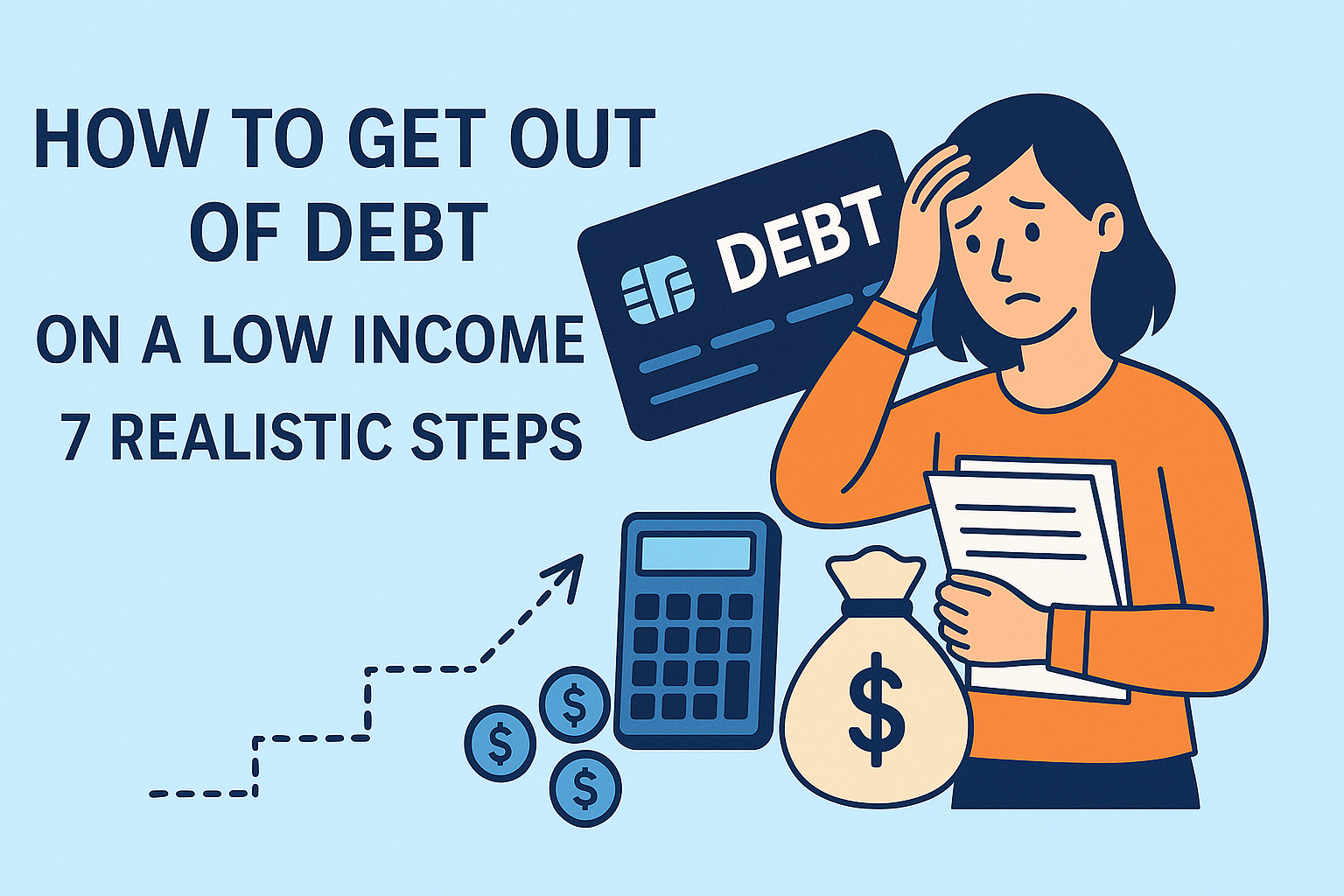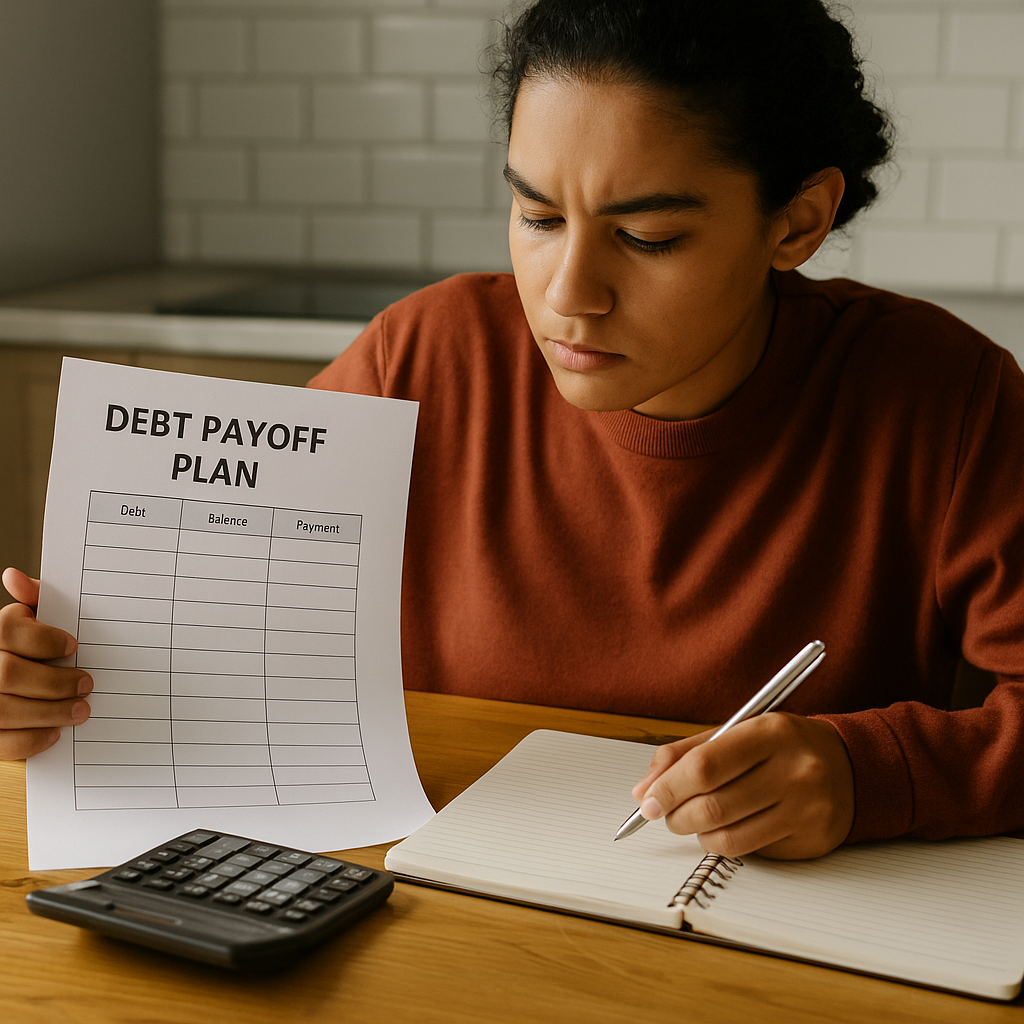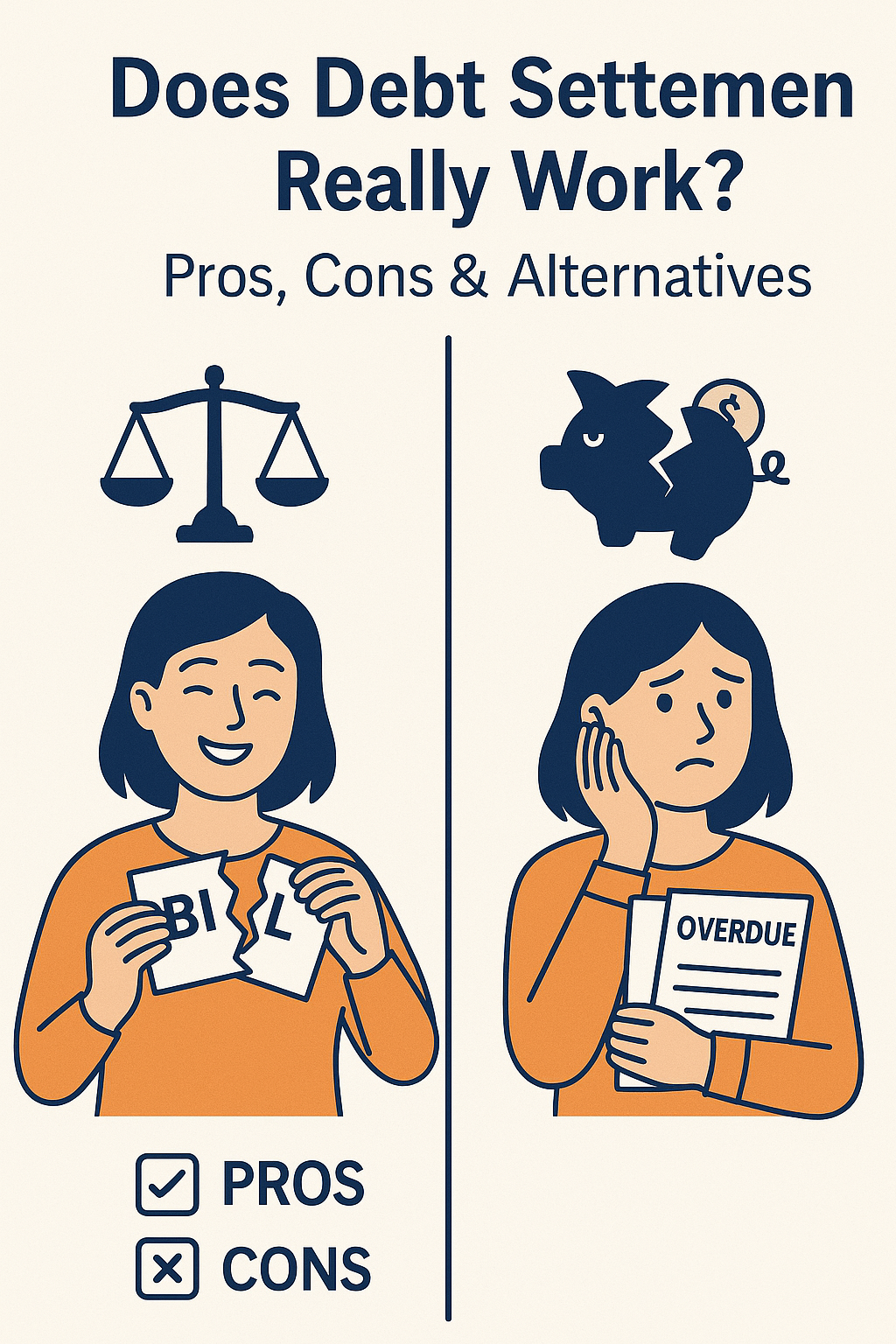Meta Description:
Drowning in debt but earning a low income? Learn 7 practical, step-by-step strategies to pay off debt faster—even when money is tight. No fluff, just real solutions.
💬 Struggling with Debt on a Low Income? You’re Not Alone
In 2025, millions of Americans are facing the same challenge: rising costs, stagnant wages, and debts that won’t quit. But here’s the truth—you can still get out of debt, even with a low income.
It won’t be easy. But it’s doable—with the right plan and mindset.
Below are 7 realistic, actionable steps to take control of your debt and start building financial freedom.
✅ 1. Know Exactly What You Owe
You can’t fix what you can’t see.
Start by listing every single debt you owe:
-
Who you owe (lender or creditor)
-
Balance
-
Minimum monthly payment
-
Interest rate
-
Due date
🛠️ Tools to use:
-
A spreadsheet
-
Budgeting app (like Mint, YNAB, or Rocket Money)
-
Pen and paper works too!
🎯 Goal: Get a full picture of your financial situation. Knowledge is power.
💸 2. Create a Bare-Bones Budget
On a low income, every dollar must have a job.
Cut non-essentials and keep expenses focused on:
-
Housing
-
Utilities
-
Groceries
-
Transportation
-
Minimum debt payments
Temporarily pause things like:
-
Subscriptions
-
Takeout
-
Name-brand groceries
-
Upgrades or non-urgent shopping
📌 Pro Tip: Use the 50/30/20 rule as a flexible guide, but adjust based on your income and debt needs.
🔥 3. Pick a Payoff Strategy That Fits You
There are two main debt repayment methods:
-
Debt Snowball: Pay smallest debt first to build momentum
-
Debt Avalanche: Pay highest-interest debt first to save more money
💡 On a low income, many people prefer the Snowball Method because early wins boost motivation.
Stick to one method consistently—that’s how results happen.
🧾 4. Always Make Minimum Payments (At Least)
Even if it feels impossible to make a dent, never skip minimum payments.
This helps you:
-
Avoid late fees
-
Protect your credit score
-
Keep your account in good standing
If you’re struggling, call your creditors. Many offer hardship programs or reduced payment plans.
💼 5. Increase Income (Even Slightly)
You don’t need a second job—you just need a small income boost.
Try:
-
Freelancing (writing, design, tutoring)
-
Selling unused items online
-
Gig apps like DoorDash, Instacart, Rover
-
Remote side hustles (Upwork, Rev, TaskRabbit)
-
Asking for more hours at work (if possible)
📈 Even $100 extra per month can speed up your debt payoff dramatically.
📞 6. Consider Debt Management Help (Not Scams)
If your debt feels unmanageable, explore non-profit credit counseling.
Look for:
-
NFCC-certified agencies (like Money Management International)
-
Debt Management Plans (DMPs) with lower interest and one monthly payment
-
FREE budgeting help and financial education
🚨 Avoid:
-
Debt settlement companies promising quick fixes
-
Upfront fees
-
Anything that sounds too good to be true
🙌 7. Celebrate Small Wins & Track Progress
Getting out of debt on a low income takes time—but it’s worth it.
Every payment matters. Celebrate each:
-
Paid-off balance
-
Reduced interest
-
On-time payment streak
-
New income stream
📊 Use a visual tracker (debt thermometer, app, or checklist) to stay encouraged.
Need a printable version? Just ask and I’ll send you a free one!
✨ Final Thoughts: Your Income Doesn’t Define Your Outcome
You don’t need to make six figures to be debt-free. You need a plan, persistence, and patience.
Plenty of low-income earners have climbed out of debt—and so can you.
Start where you are. Use what you have. Do what you can.
Your journey to financial peace starts today.
Want a free budget template or debt tracker printable?
Leave a comment or DM and I’ll send it to you—no strings attached.




